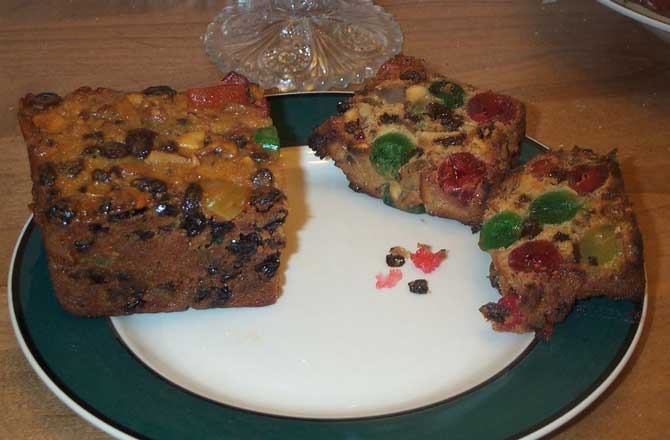"Why Are Fruitcakes Immortal?" And Other Christmas Food Mysteries
When a holiday is steeped in tradition, it honestly doesn't do much good to question why things are the way they are. This is especially true when it comes to Christmas foods, dripping with candied fruits and gingerbread, and some serious questions remain.
What are Sugarplums?

Visions of sugarplums may be dancing in children's heads, but what are they actually visualizing? If you think they're just a variety of plum, guess again: The term "plum" was once used to denote any dried fruit. Sugarplums are actually finely diced dried fruit mixed with nuts, honey, and spices like fennel and anise, then rolled into a ball and rolled in sugar.
Why are Fruitcakes Immortal?

Is that fruitcake in the back of the pantry from last year's Christmas, or from two years ago? It doesn't really matter, because fruitcakes last more or less forever. America's most ridiculed dessert, the high sugar content and traditional addition of alcohol both act as excellent preservatives.
What is Figgy Pudding?

Now bring us some figgy pudding, but only after you explain to us what exactly it is, because it sounds rather odd. It uses the British definition of "pudding," meaning any dessert (be it actual pudding, cake, pie, or other) and is essentially a dense cake made with molasses, nuts, spices like cinnamon and nutmeg, and lots of finely chopped dried figs.
What's the Deal with King Cake?

Cakes baked with a small baby figurine, usually intended to be Jesus, inside are served all over the world during Christmastime, from galette des rois in France to rosca de reyes in Spain, vasilopita in Greece, bolo-rei in Angola, and banitsa in Bulgaria. The significance of the baby varies according to different cultures; in the U.S., finding it in your slice means you will be rewarded with luck and prosperity; In Spanish-speaking countries, whoever finds it must take it to the nearest church on February 2; in Mexico, whoever finds it has to host a party on that date; and in France, the figurine (la fève) can be anything from toy cars to cartoon characters, and whoever finds it becomes "king for the day."
Does Mincemeat Actually Contain Meat?

Mince pie is a traditional British Christmas dessert, and the filling is traditionally called mincemeat. While in the past it was traditionally a savory combination of finely minced beef or mutton mixed with suet (beef fat), vinegar, prunes, raisins, and dates, today just about every variation is meat-free, and is sweeter and made with dried fruits, spices including clove, nutmeg, and cinnamon, and brandy.
